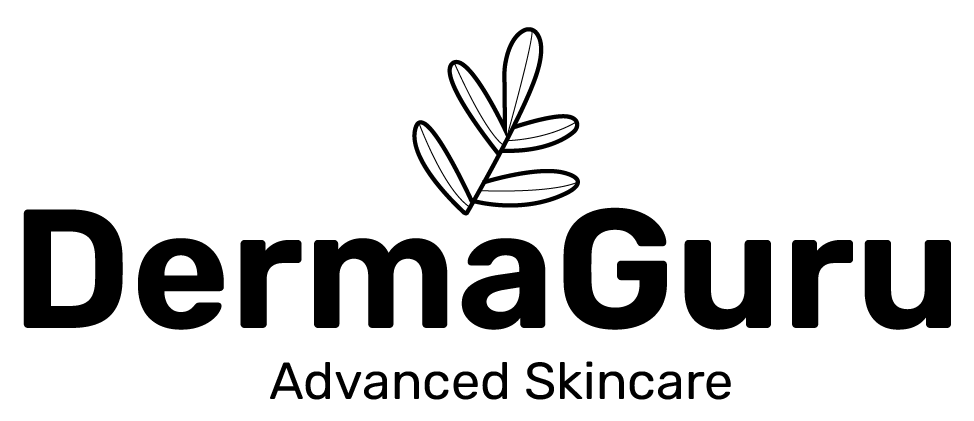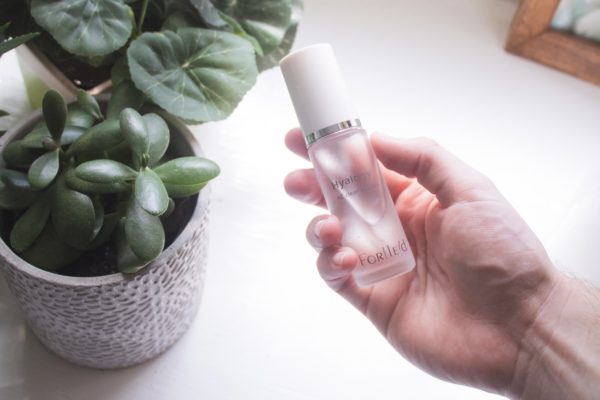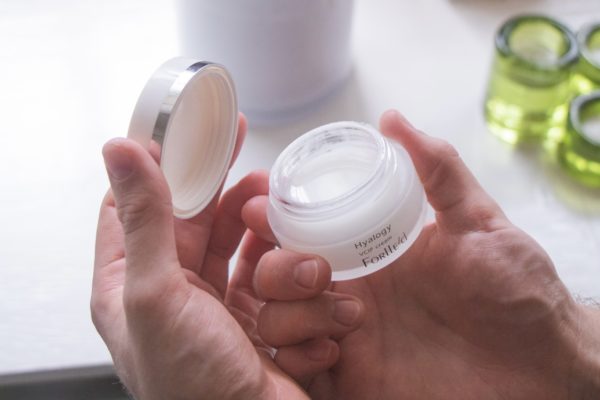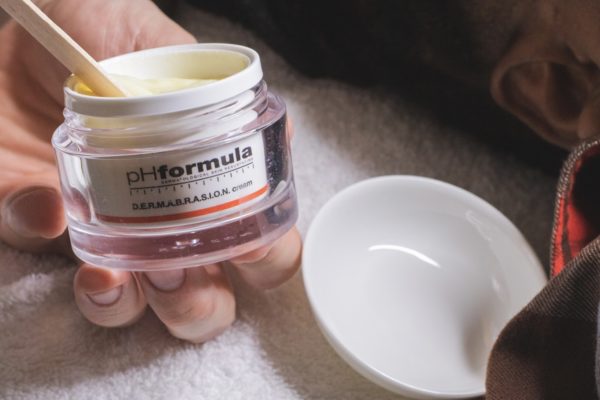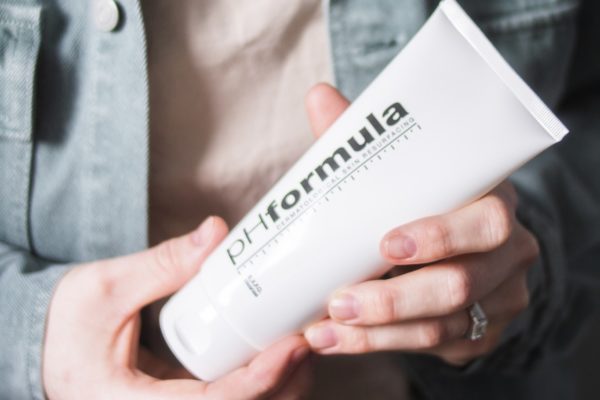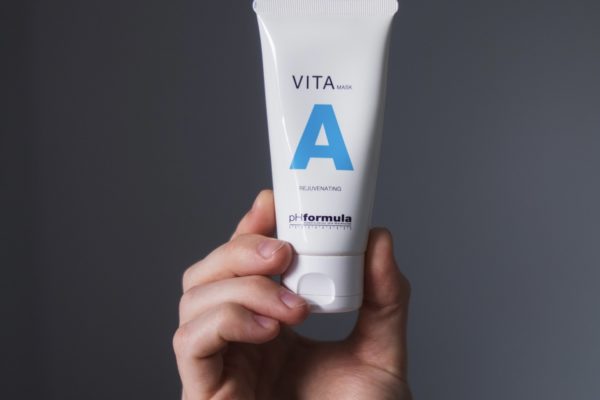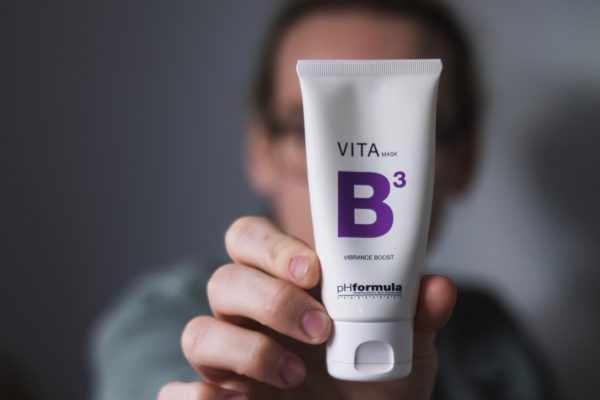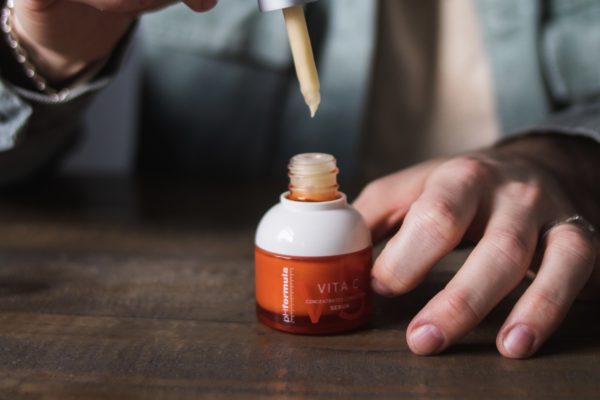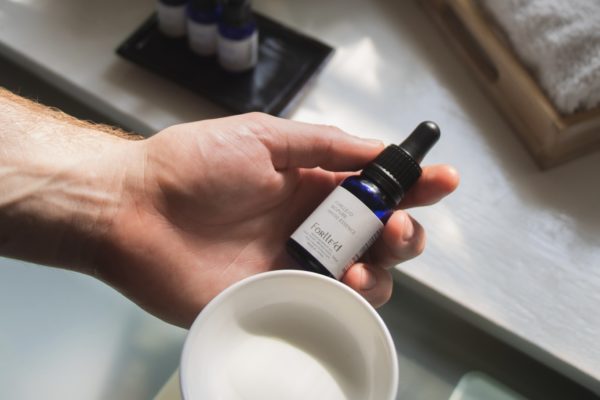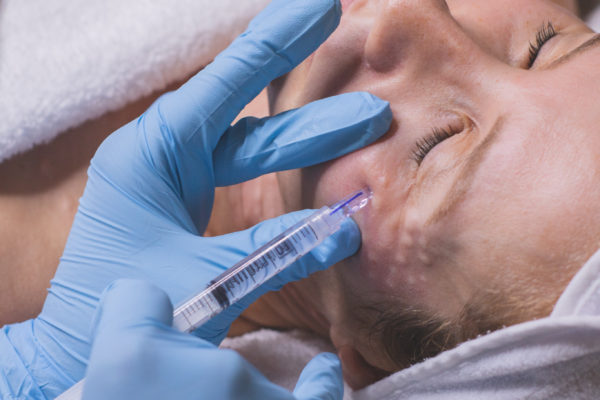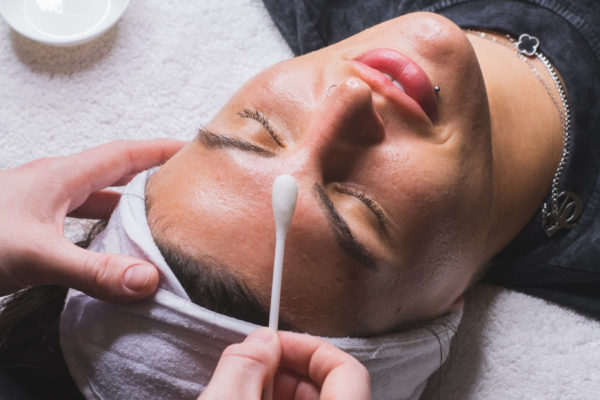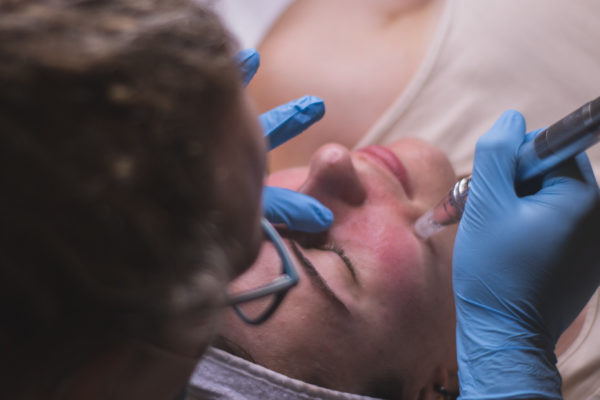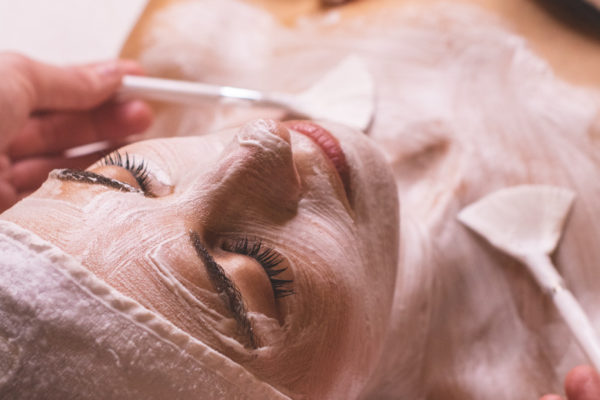Let’s Dive Into Your Skincare Ingredients…
The skincare world can be a confusing and overwhelming place when it comes to learning and understanding about the products and ingredients you should be using for your skin. In this blog series, I will be uncovering the science behind some of the most popular skincare ingredients in our daily skincare products and the best ways to use them.
Vitamin C:
Our first group of skincare ingredients, more specifically referred to as ascorbic acid, is Vitamin C, which is actually part of a family of molecules known as antioxidants. Antioxidants function by donating electrons (negative charges) to other molecules. In doing so the recipient molecule is reduced while the antioxidant is itself oxidised. This is useful in situations when important molecules, such as DNA and proteins (such as collagen), are protected from damage through radical oxygen species created by things such as: UV exposure, cigarette smoke and pollutants.
Confusing, right?
Basically, one way to think of it is that ascorbic acid neutralises the damage created by radical oxygen species.
Applying vitamin C (ascorbic acid) with a concentration between 3% and 10% has shown to statistically significant reduction in fine lines and wrinkles. This is because topical vitamin C is beneficial in protecting collagen in your skin from breaking down, which will keep your skin looking more full and youthful.
But if it reduces wrinkles, why not increase the strength to achieve your goal faster? Well, concentrations above 20% actually inhibited absorption and if your epidermis can’t absorb it… It won’t work! In an ideal world, we’d be able to put some vitamin C onto our skin or eat enough vitamin C in our diets and reap all the benefits.
Unfortunately it’s not that simple… The biggest obstacle for Vitamin C (ascorbic acid) is actually getting into the skin. The cells that produce melanin (Melanocyte) and the cells that produce collagen (Fibroblast cells) live below the outermost layer of skin known as the Stratum Corneum. This specialised layer of the epidermis prevents too much water loss or absorption.
So, here’s the problem… As a water-soluble vitamin, it must be dissolved in a water (aqueous) base – this makes it perfect for serums and creams! But much of the content in water-based creams are blocked from entering the skin, by that specialised layer of the epidermis I mentioned earlier (Stratum Corneum.)
But don’t worry… Here at the DermaGuru Clinic I have solved these problems. The absorption of ascorbic acid can be enhanced through pre-treating the skin with something like an alpha-hydroxy acid (AHA’s.) This exfoliation of the epidermis allows for the vitamin C to penetrate the specialised layer and be absorbed by the melanin and collagen producing cells. In clinic I also use a much more stable vitamin C which was formulated by pHformula which doesn’t require an exfoliation in order to be effective.
Niacinamide:
Among a handful of other amazing skincare ingredients such as retinol and vitamin C, Niacinamide is a standout because of its versatility for almost any skincare concern and skin type. The benefits of using Niacinamide for skin unanimously demonstrates how special it is.
Also known as vitamin B3 and nicotinamide, Niacinamide is a water-soluble vitamin (much like Vitamin C) that works with the natural substances in your skin to help visibly minimise enlarged pores, tighten lax pores, improve uneven skin tone, soften fine lines and wrinkles, diminish dullness, and strengthen a weakened surface.
Niacinamide also reduces the impact of environmental damage because of its ability to improve skin’s barrier, plus it also plays a role in helping skin to repair signs of past damage. Pairing this with Vitamin C will help you to start repairing and building that defence against free radicals, oxidative stress and sun damage.
Peptides:
The next of our skincare ingredients we’ll be diving into is peptides, one of the most talked-about ingredients in the field of anti-ageing skincare. When applied to your skin, they demonstrate remarkable benefits, revitalising your skin and making it more resilient.
Peptides are short chains of amino acids that act as building blocks of proteins such as collagen, elastin and keratin. These proteins are the foundations of your skin and are responsible for its texture, strength and resilience. Without peptides, our skin is less intact which can lead to a loss of firmness, the appearance of fine lines nd wrinkles as well as a change in texture.
When applied topically to the skin, peptides act as little messengers, triggering skin cells to perform specific functions such as building collagen and elastin, encouraging skin to look and act younger.
Extensive scientific research has proven that peptides can support your skin on multiple levels, for example firming, soothing and hydrating the skin.
The skin barrier is the body’s line of defence against bacteria, ultraviolet rays, pollution, and other toxins. The skin barrier can be damaged from over-exfoliation, exposure to cigarette smoke and other pollution, or even poor sleep. Peptides help build up a stronger barrier.
Collagen can plump skin and lips, and when skin is firmer and plumper, wrinkles and fine lines will be less visible. In addition to collagen, peptides also make up elastin fibres, also a type of protein. These fibres make skin look firmer and tauter. Peptides can also help ease inflammation, repair damaged skin, and even out skin tone. They can help clear breakouts. Some peptides are antimicrobial, meaning they can kill bacteria that cause acne.
What is it? How does it work? Do I need it?
DermaGuru is here to support you and answer all your skincare questions. If you’re struggling with products and ingredients – feeling overwhelmed by it all then book a consultation with me.
We can get to the route of your concerns and needs before establishing a treatment/product plan tailored to your very requirements.
Retinoids:
Retinoids stimulate collagen production, having a powerful impact on decreasing collagen breakdown and help regulate skin shedding. They’re a vitamin A derivative, one of a few actually: others include retinols, retinaldehyde, retinoids, and adapalene. Retinoids are also at the forefront of acne control, preventing comedones and follicular plugging, while also serving as a powerful anti-aging product.
Topical vitamin A–based called retinoids are some of the most used and most studied anti-aging compounds in the beauty industry. They are associated with the ability to reduce fine lines and wrinkles. But what is it and how does it work?
Other forms of vitamin A in skincare that you may be familiar with include; isotretinoin (better known as Accutane) and retinyl palmitate (another topical ingredient found in many creams.)
We start off with the ability to produce collagen in our own bodies very quickly. This changes the older we get. Even after we hit 20 years old this production slows down. However, age isn’t the only factor that can slow down collagen synthesis. UV exposure, diet, stress, drinking or smoking can all lead to a decrease in collagen production. With lost collagen, less cells are held in the skin and it starts looking uneven and fine lines start to appear more rapidly.
Vitamin A increases collagen production in the skin. It does this by firstly, inactivating matrix metalloproteinases (MMPs), enzymes in the skin which break down collagen. These are made more active by UV light. which is why it’s so important to use sunscreen. Retinol also works by increasing cellular turnover – that is, increasing the rate at which old skin cells are replaced by new ones. Finally, retinol is also an antioxidant – it stops reactive free radicals, generated by UV exposure or toxins in the environment, from wreaking havoc in your skin.
Retinoic Acid:
It used to be very popular to use the term RetinA, the real name of this ingredient is retinoic acid. Retinoic acid also has a generic drug name called tretinoin. Retinoic acid and tretinoin are the same. The reason why some products list retinol and others list retinoic acid is because the acid form (retinoic acid), is very irritating to the tissue. For this reason, many people experience redness, inflammation, and flaking from prescription-strength retinoic acid (or tretinoin which is the same thing).
Retinol:
As the alcohol form of the molecule retinoic acid, retinol is a bit more tolerant to the skin’s tissue. It is absorbed slower and doesn’t have a lot of the chemistry that you see with retinoic acid. Retinol is the best anti-acne and anti-aging cream on the market and one of the best skincare agents in the last five decades of cosmetic dermatology. Retinol works by inhibiting enzymes that are breaking down your collagen endogenously. Studies have even shown that using a powerful retinol on your skin for two years can decrease the rate of skin cancer in your skin!
However, what has happened in the skincare industry is that this amazing molecule of retinoic acid will be reduced in strength so much- to so many molecular structures that it becomes a new chemical that isn’t as effective!
Retinaldehyde:
Anyone looking for the anti-aging effects of a retinoid, especially those who have used and can tolerate retinol or retinyl palmitate, but aren’t seeing the results they want. In this case, you can up the strength to retinaldehyde, which can be more potent and effective at jumpstarting your skin cells.
While it’s important to ease into things to let your skin gradually acclimate to the ingredient, it can ultimately be used daily.
Alpha- and beta-hydroxy acids have commonly been used with retinoids to help further increase skin cell turnover (though it’s important to make those separate parts of your routine, using one in the morning and the other at night). Using antioxidants such as vitamin C, vitamin E, and niacinamide can also help improve the skin’s brightening effects. However, use these ingredients together with caution, and decrease use if you notice irritation.
Avoid using any retinoid at the same time of day as products with vitamin C, AHAs, or BHAs, as this can up the likelihood of sensitivity and irritation. I recommend using the former in the morning (under SPF, of course) and reserving the retinoid for nighttime use.
AHA’s, BHA’s & PHA’s:
The world of acids can be simplified into a few categories: Alpha Hydroxy Acids (AHAs), Beta Hydroxy Acids (BHAs) and Polyhydroxy Acids (PHAs). If you’re using a skincare acid, it’ll fall into one of these three categories.
AHAs are chemical exfoliators that can be extremely helpful for oily or blemish-prone skin if used on a regular basis. The reigning duo in this category are Glycolic Acid and Lactic Acid. You can find them mixed in with serums, creams, cleansers and toners, depending on how high of a dosage you want to use.
These can solve skin dilemmas such as wrinkles, uneven skin texture and pigmentation by essentially eating away at dead skin cells on the surface of the skin which is why you will feel a slight tingling sensation when you apply them but there’s no need to panic, that’s normal – they’re just doing their job.
BHA:
AHAs are ideal for those concerned with ageing skin, whereas BHAs are best for those who are one the oilier side of the skincare spectrum and struggle with acne, blackheads and milia (the little white bumps you sometimes see under the skin.)
Whilst AHAs are only water soluble, BHAs are oil soluble, which is why they are ideal for those struggling with an oil related skincare concerns. They can get below the oil that’s clogging up your skin and also have antibacterial and anti-inflammatory properties. So they help spots disappear quicker and calm any redness.
The most popular BHA is Salicylic acid. It can easily be found in a range of different formulas targeted at spot treatment. Exfoliating with a leave-on BHA that contains salicylic acid is a game-changer, this is because it gets rid of dull cells but doesn’t strip the skin’s essential oils.
PHA:
PHA (Polyhydroxy Acids) are very similar to traditional alpha hydroxy acids, because both work by breaking down the ‘glue’ that binds dull, dead cells to the surface of the skin.
So what sets PHAs apart? Their difference lies within their molecular structure, the molecules that make up PHAs are much larger in size, which means they cannot penetrate skin as deeply as traditional AHAs and BHAs. Instead, they work exclusively on the skin’s surface without disturbing the delicate layers that lie beneath. This ensures optimum skin renewal with minimal irritation.
They’re especially beneficial for those who find other acids too strong. Even very sensitive skin types can harness the resurfacing powers of PHAs. In clinical studies, they have been proven to be compatible with dry, itchy skin conditions such as eczema and atopic rosacea.’
The most common PHA acids are Gluconolactone, Galactose and Lactobionic – a bit confusing to say but well worth consideration when you exfoliate. These are recommend for those with very sensitive skin, especially those that suffer from rosacea. If you’ve found AHAs and BHAs too strong in the past then PHA’s would be a perfect replacement.
Hyaluronic Acid:
HA is a humectant (a substance that retains moisture.) This is essential to maintaining hydration over the day/night protecting your skin from dehydration. It is also capable of binding over one thousand times its weight in water! This substance is naturally found in many areas of the human body, including the skin and eyes but production depletes over time.
As we age, the production of key substances in the skin, including hyaluronic acid (along with collagen and elastin) decreases. As a result, our skin loses volume, hydration, and plumpness.
Many skincare products containing HA claim to increase hydration within the skin. So how do you know which ones will give you the results you want?
HA comes in different molecular sizes. Larger HA molecules, despite being the best at binding water and offering hydration, cannot penetrate into the skin. When applied topically (to the skin), these molecules sit on top of the skin, offering hydration only at the very surface. Smaller HA molecules, which bind less water than larger HA molecules, can penetrate deeper into the skin (though only into the epidermis, the topmost layer of skin). For maximum surface hydration, look for a product that contains HA molecules in a variety of sizes.
HA is also used in dermal fillers, many of which are composed of HA in an injectable gel form. HA fillers add volume by physically filling the area where they are placed, as well as by drawing water to enhance the filling effect. HA fillers can be used to address a multitude of cosmetic concerns, including lifting the cheeks, softening deeper folds and creases around the mouth and chin, neck and improving the look of sunken, dark, under-eye circles.
